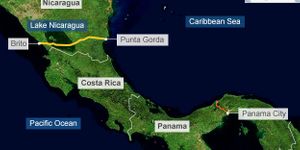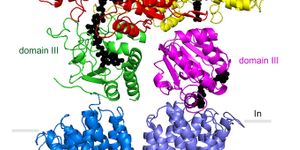Scientists have discovered evidence of oxygen-breathing microbial life more than 200 feet below the ocean floor-or 12,000 feet below sea level in the Pacific Ocean.
The microbes were found all the way through the sediment from the seafloor to the igneous basement at seven sites in the South Pacific gyre, considered the "deadest" place in the ocean.

Published in the journal Nature Geoscience, the new findings contradict previous discoveries that oxygen was absent from all but the top few feet of sediment in biologically productive regions of the ocean.
NO LIMIT TO LIFE
"Our objective was to understand the microbial community and microbial habitability of sediment in the deadest part of the ocean," says Steven D'Hondt of University of Rhode Island, the lead researcher on the project.
"Our results overturn a 60-year-old conclusion that the depth limit to life is in the sediment just meters below the seafloor in such regions. We found that there is no limit to life within this sediment. Oxygen and aerobic microbes hang in there all the way to the igneous basement, to at least 220 feet below the seafloor."
Based on predictive model and core samples collected in 2010 with the International Ocean Discovery Program's (IODP) research ship, JOIDES Resolution, the researchers believe that oxygen and aerobic microbes occur throughout the sediment in up to 37 percent of the world's oceans and 44 percent of the Pacific.
ALIVE, BUT NOT ACTIVE
The best predictors of oxygen penetration to the igneous basement are a low sediment accumulation rate and a relatively thin sediment layer. Sediment accumulates at just a few inches to feet per million years in the regions where the core samples were collected.
In the remaining 63 percent of the ocean, most of the sediment beneath the seafloor is expected to lack dissolved oxygen and to contain anaerobic communities.
While there was evidence of life throughout the sediment, the researchers admit there wasn't a lot of it. They found extremely slow rates of respiration and quantities that were nearly undetectable by previous techniques.
"It's really hard to detect life when it's not very active and in extremely low concentrations," D'Hondt says.
"The findings show the lowest cell concentrations and lowest rates of microbial activity ever encountered in marine sediment," says Carlos Alvarez-Zarikian, expedition project manager and staff scientist with IODP at Texas A&M University.
"It shows that there is no limit within the sediment in these deep environments that can reach 18,000 feet or greater below the ocean surface. The research team used new instruments and techniques that have never been utilized before on drilling expeditions such as this one."
Source: Texas A&M University









